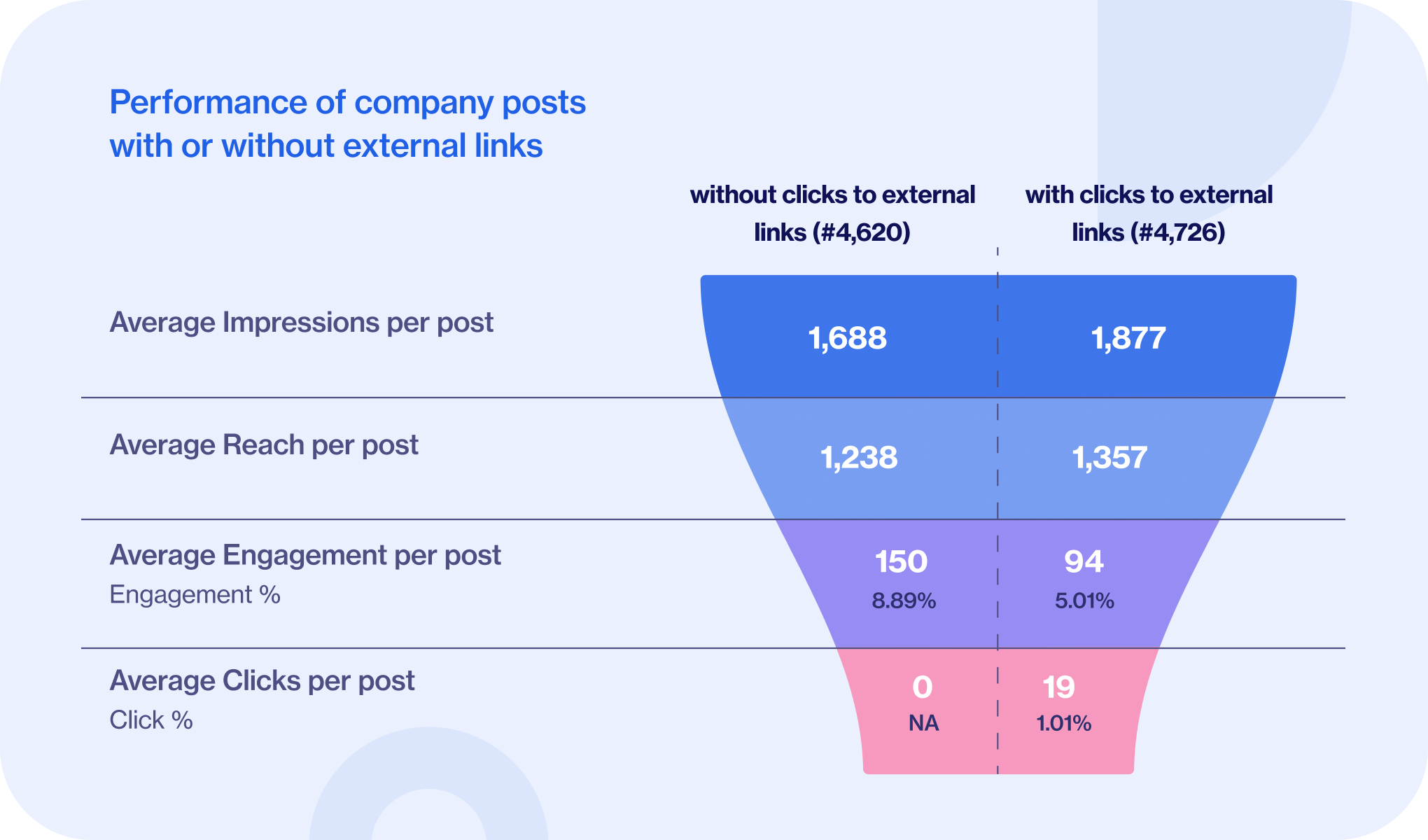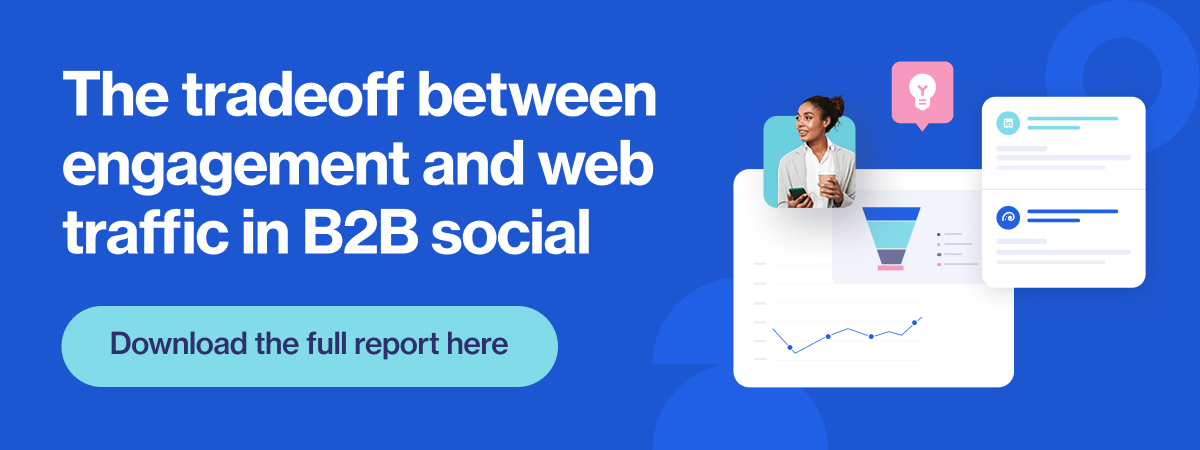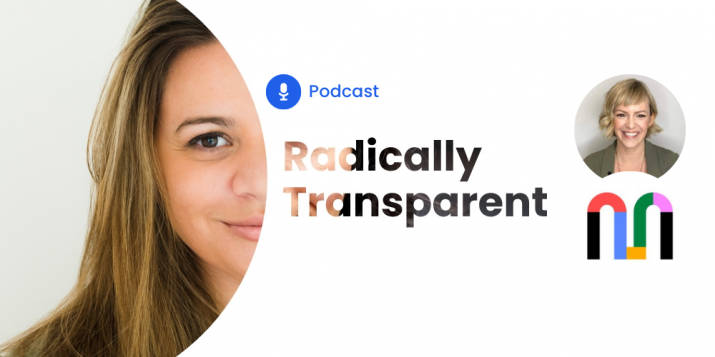
B2B social drives engagement and lead generation – Oktopost research
B2B social media has evolved from a nice-to-have into an indispensable cornerstone of modern B2B marketing. As businesses navigate the complexities of 2025 and beyond, social media platforms—particularly LinkedIn—have become critical channels for building brand presence, fostering meaningful connections, and driving sustainable growth. The report analysis proves that B2B social drives engagement and lead generation; some strategies are more impactful than others.
Social media’s ability to engage professional audiences, showcase thought leadership, and generate high-quality leads is essential to any successful B2B marketing strategy.
Oktopost’s comprehensive analysis of 9,346 LinkedIn company posts from January to October 2024 reveals fascinating insights into the delicate balance between engagement and traffic generation.
The research uncovers key patterns in post-performance, timing optimization, and content strategy that can significantly impact a B2B brand’s social media success.
Research methodology
The study examined posts from five B2B brands, analyzing performance metrics including:
- Impressions and reach per post
- Engagement rates
- Link click rates
- Content type performance
- Posting time effectiveness
Key research findings
Post distribution
The data reveals a strategic balance in posting approaches:
- 4,620 posts without external links (49%)
- 4,726 posts with external links (51%)
Performance metrics – The social funnel
Posts without external links achieved:
- 8.89% average engagement rate
- 150 average engagements per post
- 1,688 average impressions per post
Posts with external links delivered:
- 5.01% average engagement rate
- 94 average engagements per post
- 19 average clicks per post
- 1,877 average impressions per post

Content type performance
Social media managers create posts with various content attached to them with or without external links. These are the overall key findings by content type.
Posts with texts only
- 4,682 average impressions
- 3,670 average reach
- 171 average engagements
- Peak performance in July (5,659 impressions)
Posts with image galleries
- Highest engagement rate at 23.2%
- 5,356 average impressions
- 1,243 average engagements
- Best performance in July with 2,134 engagements
Posts with carousels or PDFs
- 16.4% engagement rate
- 3,799 average impressions
- 623 average engagements
- Strong performance in July and October
- Excellent for in-depth, educational content
Posts with video attachments
- 1,342 average impressions
- 67 average engagements
- 5.0% engagement rate
- Best performance in October for engagement
Post with external links
- 2,356 average impressions
- 100 average engagements
- 28 average clicks
- 4.2% engagement rate
- Highest click-through rate at 1.2%
Timing optimization
Peak performance days
- Wednesday: Highest impressions (2,045) and reach (1,473)
- Weekend posts: Higher engagement per post (175) despite lower volume.
Optimal hours
- Evening posts (18:00-20:00): Highest click rates (1.29%)
- Early morning posts (00:00-02:00): Best engagement rates (15.25%)
Recommended for further reading
Company size impact on LinkedIn post performance
The research reveals significant variations in post-performance based on company size, providing valuable insights for B2B marketers:
- Mid-sized companies (5,001-10,000 employees) achieved the highest average impressions (2,833) and engagement (386) per post.
- Companies with 501-1,000 employees generated the most clicks (22 per post), suggesting optimal audience targeting.
- The largest companies (10,001+ employees) surprisingly underperformed, with lower impressions (1,387) and engagement (66) than smaller counterparts.
- Engagement rates peaked for mid-sized companies at 13.6%, significantly outperforming other size categories.
- Click-through rates were highest for companies with 501-1,000 employees
Strategic recommendations
Read the whole research – download here 😀
Content strategy
- Maintain a balanced approach between posts with and without external links
- Prioritize gallery and PDF content for engagement
- Use link posts strategically for lead generation
Timing optimization
- Schedule posts with external links during weekday peak hours
- Reserve weekend slots for engagement-focused content
- Target evening hours for click-through optimization
How does this impact your B2B social media strategy?
This research demonstrates that successful B2B social media marketing requires a nuanced approach that balances:
- Brand building through high-engagement posts
- Lead generation through strategic link placement
- Content type optimization based on objectives
- Timing alignment with audience behavior
The findings suggest that B2B marketers should adopt a hybrid strategy leveraging engagement-focused content and traffic-driving posts to maximize their LinkedIn presence and achieve their marketing objectives.
Final thoughts
It is highly recommended to download the entire research and benchmark your performance results to others.
The findings from this extensive research underscore the critical importance of implementing a balanced B2B social media strategy supported by tracking and analytics capabilities. To effectively leverage social media for both brand awareness and lead generation, B2B marketing leaders require a dedicated social media management platform that can:
- Track and analyze company post-performance across multiple metrics
- Measure engagement rates and click-through performance
- Monitor content type effectiveness
- Optimize posting schedules
- Generate comprehensive analytics for your next campaign
As social media continues to evolve as a primary channel for B2B marketing, the ability to accurately measure, analyze, and optimize social media performance becomes increasingly crucial for achieving both community-building objectives and revenue growth goals.
A specialized B2B social media platform provides the necessary infrastructure to transform social media from a communication channel into a strategic asset for business growth.



